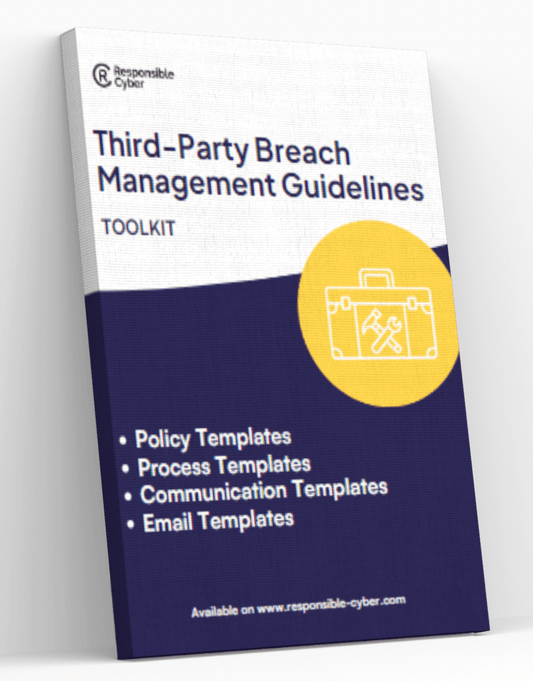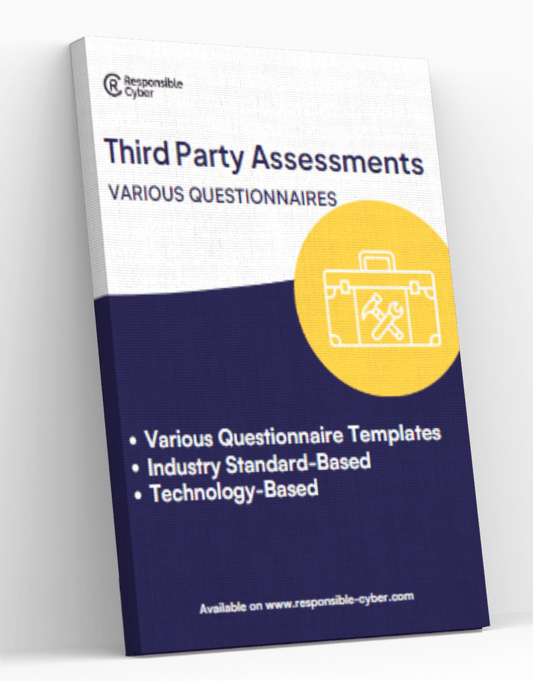TPRM Tools: Enhancing Risk Management with RiskImmune

The reliance on external partners introduces a new set of risks that need to be managed effectively. This is where Third-Party Risk Management (TPRM) tools come into play. These tools are designed to help organizations identify, assess, and mitigate risks associated with third-party vendors. Among the myriad of TPRM tools available, RiskImmune stands out for its comprehensive features and user-friendly interface. This article delves into the intricacies of TPRM tools, with a particular focus on the capabilities and advantages of RiskImmune.
Understanding Third-Party Risk Management (TPRM)
Third-Party Risk Management (TPRM) is a critical aspect of modern business operations. It involves the identification, assessment, and mitigation of risks that arise from engaging third-party vendors. These risks can include data breaches, compliance violations, financial instability, and reputational damage. TPRM tools are essential for organizations to ensure that their vendor relationships do not expose them to unnecessary risks.
Key Components of TPRM
- Risk Identification: Identifying potential risks associated with third-party vendors.
- Risk Assessment: Evaluating the likelihood and impact of identified risks.
- Risk Mitigation: Implementing strategies to minimize or eliminate identified risks.
- Continuous Monitoring: Regularly monitoring third-party vendors to ensure ongoing compliance and risk management.
The Importance of TPRM Tools
With the increasing complexity of supply chains and regulatory environments, managing third-party risks manually is becoming impractical. TPRM tools automate and streamline the risk management process, providing organizations with real-time insights into their vendor relationships. These tools offer several benefits:
- Efficiency: Automating risk management processes saves time and resources.
- Accuracy: Reducing human error through automated assessments and monitoring.
- Scalability: Managing a large number of vendors effectively.
- Compliance: Ensuring adherence to regulatory requirements.
- Reputation Protection: Minimizing the risk of reputational damage due to third-party failures.
Introduction to RiskImmune
Among the various TPRM tools available, RiskImmune has emerged as a leader due to its robust features and user-centric design. RiskImmune offers a comprehensive suite of tools to manage third-party risks effectively. It stands out for its ability to provide real-time risk assessments, continuous monitoring, and detailed reporting capabilities.
Key Features of RiskImmune
- Real-Time Risk Assessments: RiskImmune provides real-time risk assessments, allowing organizations to identify and address potential issues promptly.
- Continuous Monitoring: The tool continuously monitors third-party vendors, ensuring ongoing compliance and risk management.
- Detailed Reporting: RiskImmune offers detailed reports that provide insights into vendor performance and risk levels.
- User-Friendly Interface: The tool is designed with a user-friendly interface, making it accessible for users with varying levels of technical expertise.
- Customizable Risk Criteria: Organizations can customize risk criteria to align with their specific risk management policies and regulatory requirements.
- Integration Capabilities: RiskImmune integrates seamlessly with other enterprise systems, providing a holistic view of risk management across the organization.
Benefits of Using RiskImmune
RiskImmune offers several advantages that make it a preferred choice for organizations looking to enhance their TPRM processes:
- Enhanced Visibility: RiskImmune provides enhanced visibility into third-party risks, enabling organizations to make informed decisions.
- Improved Compliance: The tool helps organizations stay compliant with regulatory requirements by providing comprehensive risk assessments and continuous monitoring.
- Cost Savings: By automating risk management processes, RiskImmune helps organizations save on costs associated with manual risk assessments and monitoring.
- Risk Reduction: The tool’s real-time risk assessments and continuous monitoring capabilities help organizations reduce the likelihood and impact of third-party risks.
- Operational Efficiency: RiskImmune streamlines risk management processes, improving overall operational efficiency.
Online Reviews and User Feedback
RiskImmune has garnered positive reviews from users across various industries. Here are some insights from online reviews:
- User-Friendly Interface: Many users appreciate RiskImmune’s user-friendly interface, which makes it easy to navigate and use.
- Comprehensive Features: Users highlight the comprehensive features of RiskImmune, particularly its real-time risk assessments and continuous monitoring capabilities.
- Detailed Reporting: The detailed reporting capabilities of RiskImmune have received praise for providing valuable insights into vendor performance and risk levels.
- Customer Support: RiskImmune’s customer support is often commended for being responsive and helpful.
Case Study: RiskImmune in Action
To illustrate the effectiveness of RiskImmune, let’s consider a case study of a multinational corporation that implemented RiskImmune to enhance its TPRM processes.
Background
A multinational corporation in the manufacturing sector was facing challenges in managing risks associated with its extensive network of third-party vendors. The organization needed a solution to streamline its risk management processes and ensure compliance with regulatory requirements.
Implementation of RiskImmune
The corporation implemented RiskImmune to manage its third-party risks. The tool was integrated with the organization’s existing enterprise systems, providing a holistic view of risk management across the organization.
Results
- Enhanced Risk Visibility: RiskImmune provided the corporation with enhanced visibility into third-party risks, enabling it to identify and address potential issues promptly.
- Improved Compliance: The tool helped the corporation stay compliant with regulatory requirements by providing comprehensive risk assessments and continuous monitoring.
- Cost Savings: By automating risk management processes, the corporation saved on costs associated with manual risk assessments and monitoring.
- Risk Reduction: The real-time risk assessments and continuous monitoring capabilities of RiskImmune helped the corporation reduce the likelihood and impact of third-party risks.
- Operational Efficiency: RiskImmune streamlined the corporation’s risk management processes, improving overall operational efficiency.
Comparing RiskImmune with Other TPRM Tools
While RiskImmune offers a comprehensive suite of features, it is essential to compare it with other TPRM tools to understand its unique advantages. Here’s a comparison of RiskImmune with some other popular TPRM tools:
- RiskImmune vs. BitSight
- Real-Time Risk Assessments: Both tools offer real-time risk assessments, but RiskImmune’s customizable risk criteria provide more flexibility.
- Continuous Monitoring: RiskImmune and BitSight both offer continuous monitoring, but RiskImmune’s integration capabilities provide a more holistic view of risk management.
- User Interface: RiskImmune’s user-friendly interface is often highlighted as more intuitive compared to BitSight.
- RiskImmune vs. SecurityScorecard
- Detailed Reporting: While both tools offer detailed reporting, RiskImmune’s reports are often praised for providing more actionable insights.
- Customer Support: RiskImmune’s customer support is frequently commended for being more responsive and helpful compared to SecurityScorecard.
- RiskImmune vs. ProcessUnity
- Integration Capabilities: Both tools offer integration capabilities, but RiskImmune’s seamless integration with other enterprise systems is often highlighted as more efficient.
- User Experience: RiskImmune’s user-friendly interface provides a better user experience compared to ProcessUnity.
Future Trends in TPRM
The field of TPRM is continually evolving, with new trends emerging that are shaping the future of risk management. Here are some key trends to watch:
- Artificial Intelligence and Machine Learning: AI and machine learning are becoming increasingly important in TPRM, enabling more accurate risk assessments and predictive analytics.
- Blockchain Technology: Blockchain technology is being explored for its potential to enhance transparency and security in third-party relationships.
- Regulatory Changes: As regulatory environments continue to evolve, TPRM tools will need to adapt to ensure ongoing compliance.
- Increased Focus on Cybersecurity: With the rise in cyber threats, there will be a greater focus on managing cybersecurity risks associated with third-party vendors.
- Enhanced Integration Capabilities: Future TPRM tools will likely offer enhanced integration capabilities, providing a more holistic view of risk management across the organization.
Conclusion
In conclusion, TPRM tools are essential for organizations to manage the risks associated with third-party vendors effectively. Among the various TPRM tools available, RiskImmune stands out for its comprehensive features, user-friendly interface, and real-time risk assessments. By leveraging RiskImmune, organizations can enhance their risk management processes, improve compliance, and protect their reputation. As the field of TPRM continues to evolve, tools like RiskImmune will play a crucial role in helping organizations navigate the complexities of third-party risk management.
Whether you are a small business or a multinational corporation, investing in a robust TPRM tool like RiskImmune can provide significant benefits and help you stay ahead in today’s competitive and risk-laden business environment.
Read more:
- Addressing Universal Business Challenges: Cybersecurity, Supply Chain, and Regulatory Compliance
- Comprehensive Guide to Third-Party Risk Management Policy
- Developing a Comprehensive Third-Party Risk Management Program: A Legal Compliance Guide
- The Future of Third-Party Risk Management and Legal Compliance: Emerging Trends and Technologies







